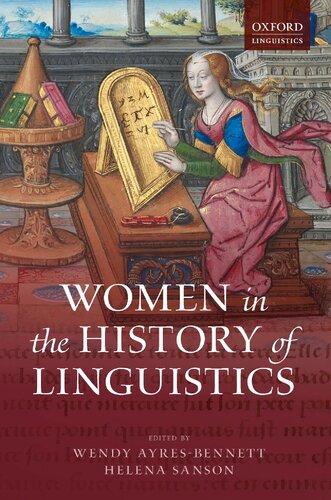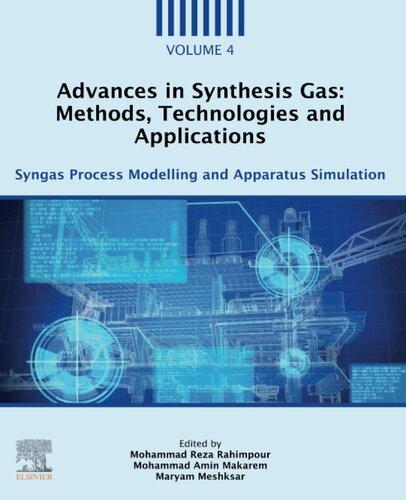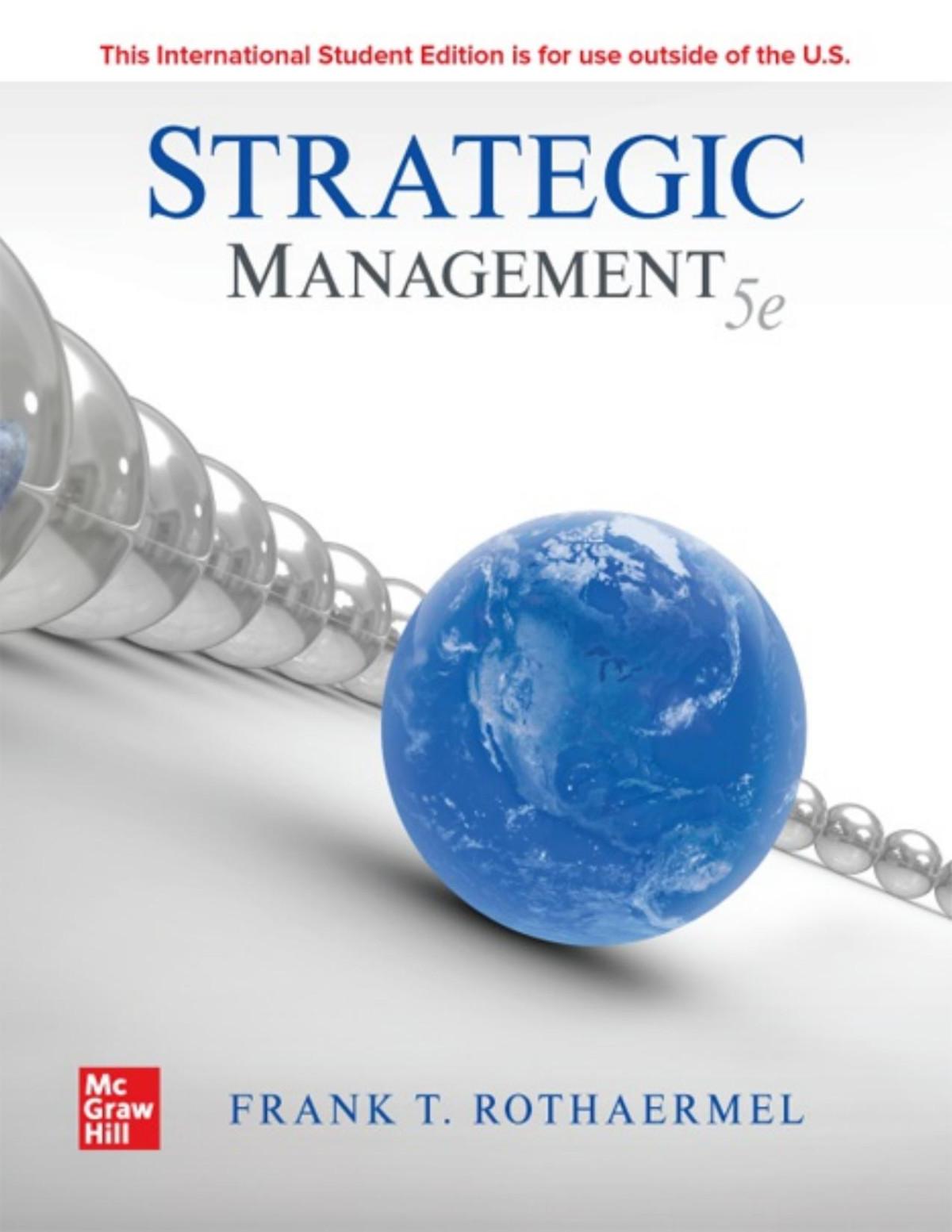Continuous Functions
Jacques Simon
First published 2020 in Great Britain and the United States by ISTE Ltd and John Wiley & Sons, Inc.
Apart from any fair dealing for the purposes of research or private study, or criticism or review, as permitted under the Copyright, Designs and Patents Act 1988, this publication may only be reproduced, stored or transmitted, in any form or by any means, with the prior permission in writing of the publishers, or in the case of reprographic reproduction in accordance with the terms and licenses issued by the CLA. Enquiries concerning reproduction outside these terms should be sent to the publishers at the undermentioned address:
ISTE Ltd
John Wiley & Sons, Inc.
27-37 St George’s Road 111 River Street London SW19 4EU Hoboken, NJ 07030 UK USA
www.iste.co.uk
www.wiley.com
© ISTE Ltd 2020
The rights of Jacques Simon to be identified as the author of this work have been asserted by him in accordance with the Copyright, Designs and Patents Act 1988.
Library of Congress Control Number: 2020933955
British Library Cataloguing-in-Publication Data
A CIP record for this book is available from the British Library
ISBN 978-1-78630-010-2
FamiliarizationwithSemi-normedSpaces xiii
Notations .......................................xv
Chapter1.SpacesofContinuousFunctions ...............1
1.1.Notionsofcontinuity............................1
1.2.Spaces C (Ω; E ), Cb (Ω; E ), CK (Ω; E ), C(Ω; E ) and Cb (Ω; E ) ....3
1.3.Comparisonofspacesofcontinuousfunctions..............6
1.4.Sequentialcompletenessofspacesofcontinuousfunctions.......10
1.5.Metrizabilityofspacesofcontinuousfunctions.............11
1.6.Thespace K (Ω; E ) .............................14
1.7.Continuousmappings............................20
1.8.Continuousextensionandrestriction...................22
1.9.Separationandpermutationofvariables..................23
1.10.Sequentialcompactnessin Cb (Ω; E ) ..................28
Chapter2.DifferentiableFunctions .....................31
2.1.Differentiability...............................31
2.2.Finiteincrementtheorem..........................34
2.3.Partialderivatives..............................37
2.4.Higherorderpartialderivatives.......................40
2.5.Spaces C m (Ω; E ), C m b (Ω; E ), C m K (Ω; E ), Cm b (Ω; E ) and K m (Ω; E ) .42
2.6.Comparisonandmetrizabilityofspacesofdifferentiablefunctions..45
2.7.Filteringpropertiesofspacesofdifferentiablefunctions........47
2.8.Sequentialcompletenessofspacesofdifferentiablefunctions.....49
2.9.Thespace C m (Ω; E ) andtheset C m (Ω; U ) ................52
viContinuousFunctions
Chapter3.DifferentiatingCompositeFunctionsandOthers .....55
3.1.Imageunderalinearmapping.......................55
3.2.Imageunderamultilinearmapping:Leibnizrule............59
3.3.DualformulaoftheLeibnizrule......................63
3.4.Continuityoftheimageunderamultilinearmapping..........65
3.5.Changeofvariablesinaderivative.....................69
3.6.Differentiationwithrespecttoaseparatedvariable...........72
3.7.Imageunderadifferentiablemapping...................73
3.8.Differentiationandtranslation.......................77
3.9.Localizingfunctions.............................79
Chapter4.IntegratingUniformlyContinuousFunctions ........83
4.1.Measureofanopensubsetof Rd ......................83
4.2.Integralofauniformlycontinuousfunction................87
4.3.Casewhere E isnotaNeumannspace...................92
4.4.Propertiesoftheintegral..........................93
4.5.Dependenceoftheintegralonthedomainofintegration........96
4.6.Additivitywithrespecttothedomainofintegration...........99
4.7.Continuityoftheintegral..........................101
4.8.Differentiatingundertheintegralsign...................103
Chapter5.PropertiesoftheMeasureofanOpenSet .........105
5.1.Additivityofthemeasure..........................105
5.2.Negligiblesets................................107
5.3.Determinantof d vectors..........................112
5.4.Measureofaparallelepiped........................115
Chapter6.AdditionalPropertiesoftheIntegral .............119
6.1.Contributionofanegligiblesettotheintegral..............119
6.2.Integrationanddifferentiationinonedimension.............120
6.3.Integrationofafunctionoffunctions...................123
6.4.Integratingafunctionofmultiplevariables................125
6.5.Integrationbetweengraphs.........................130
6.6.Integrationbypartsandweakvanishingconditionforafunction....133
6.7.Changeofvariablesinanintegral.....................135
6.8.Someparticularchangesofvariablesinanintegral...........142
Chapter7.WeightingandRegularizationofFunctions ........147
7.1.Weighting...................................147
7.2.Propertiesofweighting...........................150
7.3.Weightingofdifferentiablefunctions...................153
7.4.Localregularization.............................157
7.5.Globalregularization............................162
7.6.Partitionofunity...............................166
7.7.Separabilityof K ∞ (Ω) ...........................170
Chapter8.LineIntegralofaVectorFieldAlongaPath ........173
8.1.Paths.....................................173
8.2.Lineintegralofafieldalongapath....................176
8.3.Lineintegralalongaconcatenationofpaths...............181
8.4.Tubularflowandtheconcentrationtheorem...............183
8.5.Invarianceunderhomotopyofthelineintegralofalocalgradient...186
Chapter9.PrimitivesofContinuousFunctions .............191
9.1.Explicitprimitiveofafieldwithlineintegralzero............191
9.2.Primitiveofafieldorthogonaltothedivergence-freetestfields....194
9.3.Gluingoflocalprimitivesonasimplyconnectedopenset.......195 9.4.Explicitprimitiveonastar-shapedset:Poincaré’stheorem.......197 9.5.ExplicitprimitiveundertheweakPoincarécondition..........199 9.6.Primitivesonasimplyconnectedopenset................203 9.7.Comparisonoftheexistenceconditionsforaprimitive.........205 9.8.Fieldswithlocalprimitivesbutnoglobalprimitive...........208 9.9.Uniquenessofprimitives..........................210 9.10.Continuousprimitivemapping......................211
Chapter10.AdditionalResults:IntegrationonaSphere .......213
10.1.Surfaceintegrationonasphere......................213
10.2.Propertiesoftheintegralonasphere...................215 10.3.Radialcalculationofintegrals.......................218
10.4.Surfaceintegralasanintegralofdimension d 1 ...........220 10.5.AStokesformula..............................224
Appendix .......................................227
Introduction
Objective. Thisbookisthesecondofsixvolumesinaseriesdedicatedtothe mathematicaltoolsforsolvingpartialdifferentialequationsderivedfromphysics:
Volume1: Banach,Fréchet,HilbertandNeumannSpaces;
Volume2: ContinuousFunctions;
Volume3: Distributions;
Volume4: LebesgueandSobolevSpaces;
Volume5: Traces;
Volume6: PartialDifferentialEquations.
Thissecondvolumeisdevotedtothepartialdifferentiationoffunctionsandthe constructionofprimitives,whichisitsinversemapping,andtotheirproperties,which willbeusefulforconstructingdistributionsandstudyingpartialdifferentialequations later.
Targetaudience. Weintendedtofindsimplemethodsthatrequireaminimallevel ofknowledgetomakethesetoolsaccessibletothelargestaudiencepossible–PhD candidates,advancedstudents1 andengineers–withoutlosinggeneralityandeven generalizingsomestandardresults,whichmaybeofinteresttosomeresearchers.
1 Students? WhatmightIhaveansweredifoneofmyMASstudentsin1988hadaskedformoredetails aboutthe deRhamdualitytheorem thatIusedtoobtainthepressureintheNavier–Stokesequations? PerhapsIcouldsaythat“Jacques-LouisL IONS ,mysupervisor,wrotethatitfollowsfromthedeRham cohomologytheorem,ofwhichIunderstandneitherthestatement,northeproof,norwhyitimpliesthe resultthatweareusing.”Whatadespicablyunscientificappealtoauthority! Thisquestionwasthestartingpointofthiswork:writingproofsthatIcanexplaintomystudentsfor everyresultthatIuse.Ittookme5yearstofindthe“elementary”proofofthe orthogonalitytheorem
xContinuousFunctions
Originality. Theconstructionofprimitives,theCauchyintegralandtheweighting withwhichtheyareobtainedareperformedforafunctiontakingvaluesina Neumann space,thatis,aspaceinwhicheveryCauchysequenceconverges.
Neumannspaces. Thesequentialcompletenesscharacterizingthesespacesisthe mostgeneralpropertyof E thatguaranteesthattheintegralofacontinuousfunction takingvaluesin E willbelongtoit,see Casewhere E isnotaNeumannspace (§4.3, p.92).Thispropertyismoregeneralthanthemorecommonlyconsideredproperty ofcompleteness,thatistheconvergenceofallCauchyfilters;forexample,if E is aninfinite-dimensionalHilbertspace,then E -weak isaNeumannspacebutisnot complete[Vol.1,Property(4.11),p.82].
Moreover,sequentialcompletenessismorestraightforwardthancompleteness. Semi-norms. Weusefamiliesofsemi-norms,insteadoftheequivalentnotionof locallyconvextopologies,tobeabletodefinedifferentiability(p.73)bycomparing thesemi-normsofavariationofthevariabletothesemi-normsofthevariationofthe value.Asectionon FamiliarizationwithSemi-normedSpaces canbefoundonp.xiii. Semi-normscanbemanipulatedinasimilarfashiontonormedspaces,exceptthatwe areworkingwithseveralsemi-normsinsteadofasinglenorm.
Primitives. Weshowthatanycontinuousfield q =(q1 ,...,qd ) onanopenset Ω of Rd hasaprimitive f ,namelythat ∇f = q ,ifandonlyifitisorthogonaltothe divergence-freetestfields,thatis,if Ω q . ψ =0E forevery ψ =(ψ1 ,...,ψd ) such that ∇ . ψ =0.Thisisthe orthogonalitytheorem (Theorem9.2).
When Ω issimplyconnected,foraprimitive f toexist,itisnecessaryandsufficient for q tohavelocalprimitives.Thisisthe localprimitivegluingtheorem (Theorem9.4). Onanysuchopenset,itisalsonecessaryandsufficientthatitverifiesPoincaré’s condition ∂i qj = ∂j qi forevery i and j tobesatisfiedifthefieldis C 1 (Theorem9.10), oraweakversionofthiscondition, Ω qj ∂i ϕ = Ω qi ∂j ϕ foreverytestfunction ϕ,if thefieldiscontinuous(Theorem9.11).
Weexplicitlydetermineallprimitives(Theorem9.17)andconstructonethat dependscontinuouslyon q (Theorem9.18).
Integration. WeextendtheCauchyintegraltouniformlycontinuousfunctionstaking valuesinaNeumannspace,becausethiswillbeanessentialtoolforconstructing primitives.
(Theorem9.2,p.194)ontheexistenceoftheprimitivesofafield q .Ineededawaytoobtain Γ q . d =0 foreveryclosedpath Γ fromthecondition Ω q . ψ =0 foreverydivergence-free ψ .Itgavemethegreatest mathematicalsatisfactionIhaveeverexperiencedtoexplicitlyconstructanincompressibletubularflow(see p.184).Twenty-fiveyearslater,Iamfinallyreadytoansweranyotherquestionsfrommy(verypersistent) students.
Introductionxi
Thepropertiesestablishedhereforcontinuousfunctionswillalsobeusedto extendthemtointegrabledistributionsinVolume4,bycontinuityortransposition. Indeed,oneoftheobjectivesofthe AnalysisforPDEs seriesistoextendintegration andSobolevspacestotakevaluesinNeumannspaces.However,itseemedmore straightforwardtofirstconstructdistributions(inVolume3)usingjustcontinuous functionsbeforeintroducingintegrabledistributions(inVolume4),whichplaythe roleusuallyfulfilledby classesofalmosteverywhereequalintegrablefunctions
Weighting. Theweightedfunction f μ ofafunction f definedonanopenset Ω bytheweight μ,arealfunctionwithcompactsupport D ,isafunctiondefinedonthe openset ΩD = {x ∈ Rd : x + D ⊂ Ω} by (f μ)(x)= ˚ D f (x + y ) μ(y )dy .This conceptwillberepeatedlyuseful.Itplaysananalogousroletoconvolution,whichis equivalenttoituptoasymmetryof μ when Ω= Rd .
Novelties. Manyresultsarenaturalextensionsofpreviousresults,butthefollowing seemedmostnoteworthy:
—Theconstructionofthetopologyofthespace K (Ω; E ) ofcontinuousfunctions withcompactsupportusingthesemi-norms f K(Ω;E );q =supx∈Ω q (x) f (x) E ;ν indexedby q ∈C + (Ω) and ν ∈NE (Definition1.17).Thisisequivalenttoandmuch simplerthantheinductivelimittopologyofthe CK (Ω; E )
—Thefactthatifafunction f ∈C (Ω) satisfies supx∈Ω q (x)|f (x)| < ∞ forevery q ∈C + (Ω),thenitssupportiscompact(Theorem1.22).Thisisthebasisfordefining thesemi-normsof D (Ω) inVolume3.
—The concentrationtheorem fortheintegralandtheconstructionofan incompressible tubularflow (Theorems8.18and8.17),whicharekeystepsinour constructionoftheprimitivesofafieldtakingvaluesinaNeumannspace,asitis explainedinthecomment Utilityoftheconcentrationtheorem,p.186.
Prerequisites. Theproofsinthemainbodyofthetextonlyusedefinitionsandresults establishedinVolume1,whosestatementsarerecalledeitherinthetextorinthe Appendix.Detailedproofsaregiven,includingargumentsthatmayseemtrivialto experiencedreaders,andthetheoremnumbersaresystematicallyreferenced.
Comments. Commentswithasmallerfontsizethanthemainbodyofthetextappealtoexternalresultsor resultsthathavenotyetbeenestablished.TheAppendixon Reminders isalsowrittenwithasmallerfont size,sinceitscontentsareassumedtobefamiliar.
Historicalnotes. Whereverpossible,theoriginoftheconceptsandresultsisgiven asafootnote2.
2 Appealtothereader. ManyimportantresultslackhistoricalnotesbecauseIamnotfamiliarwiththeir origins.Ihopethatmyreaderswillforgivemefortheseomissionsandanyinjusticestheymaydiscover. AndIencouragethescholarsamongyoutonotifymeofanyimprovementsforfutureeditions!
xiiContinuousFunctions
Navigationthroughthebook:
—The TableofContents atthestartofthebookliststhetopicsdiscussed.
—The TableofNotations,p.xv,specifiesthemeaningofthenotationincasethere isanydoubt.
—The Index,p.243,providesanalternativeaccesstospecifictopics.
—Allhypothesesarestateddirectlywithinthetheoremsthemselves.
—Thenumberingschemeissharedacrosseverytypeofstatementtomakeresults easiertofindbynumber(forinstance,Theorem2.9isfoundbetweenthestatements 2.8and2.10,whichareadefinitionandatheorem,respectively).
Acknowledgments. EnriqueF ERNÁNDEZ -C ARA suggestedtomealargenumberof improvementstovariousversionsofthiswork.JérômeL EMOINE waskindenough toproofreadthecountlessversionsofthebookandcorrectjustasmanymistakesand oversights.
OlivierB ESSON ,FulbertM IGNOT ,NicolasD EPAUW ,andDidierB RESCH also providedmanyimprovements,informandinsubstance.
PierreD REYFUSS gavemeinsightintothenecessityofsimplyconnecteddomains fortheexistenceofprimitiveswithPoincaré’scondition,asexplainedonp.209inthe comment Issimpleconnectednessnecessaryforgluingtogetherlocalprimitives?
JoshuaP EPPER spentmuchtimediscussingaboutthebestwaytoadaptthiswork inEnglish.
Thankyou,myfriends.
JacquesS IMON Chapdes-Beaufort April2020
FamiliarizationwithSemi-normedSpaces
A semi-normedspace E isavectorspaceendowedwithafamily { E ;ν : ν ∈NE } ofsemi-norms.
—Theset NE indexingthesemi-normsis, apriori,arbitrary.
—A normed spaceisthespecialcasewherethisfamilysimplyconsistsofasinglenorm.
—Everylocallyconvextopologicalvectorspacecanbeendowedwithafamilyofsemi-normsthat generatesitstopology(Neumann’stheorem).
—Weonlyconsider separated spaces,namelyinwhich u E ;ν =0 forevery ν ∈NE ,then u =0E
Workingwithsemi-normedspaces:
un → u in E meansthat un u E ;ν → 0 forevery ν ∈NE
U is bounded in E meansthat supu∈U u E ;ν < ∞ forevery ν ∈NE
T is continuous from F into E atthepoint u meansthat,forevery ν ∈NE and > 0,thereexistsa finiteset M of NF and η> 0 suchthat supμ∈M v u F ;μ ≤ η implies T (v ) T (u) E ;ν ≤
Examples—real-valuedfunctionspaces:
—Thespace Cb (Ω) ofcontinuousandboundedfunctionsisendowedwiththenorm f Cb (Ω) =supx∈Ω |f (x)|
C (Ω) isendowedwiththesemi-norms f C (Ω);K =supx∈K |f (x)| indexedbythecompactsets K ⊂ Ω
Lp (Ω) isendowedwiththenorm f Lp (Ω) =( Ω |f |p )1/p
Lp loc (Ω) isendowedwiththesemi-norms f Lp loc (Ω);ω =( ω |f |p )1/p indexedbythebounded opensets ω suchthat ω ⊂ Ω
Examples—abstract-valuedfunctionspaces:
Cb (Ω; E ) isendowedwiththesemi-norms f Cb (Ω;E );ν =supx∈Ω f (x) E ;ν indexedby ν ∈NE
C (Ω; E ) isendowedwiththesemi-norms f C (Ω;E );K,ν =supx∈K f (x) E ;ν indexedbythe compactsets K ⊂ Ω and ν ∈NE
Lp (Ω; E ) isendowedwiththesemi-norms f Lp (Ω;E );ν =( Ω f p E ;ν )1/p indexedby ν ∈NE
Examples—weakspace,dualspace:
E -weak isendowedwiththesemi-norms e E -weak;e = | e ,e | indexedby e ∈ E
E isendowedwiththesemi-norms e E ;B =supe∈B | e ,e | indexedbytheboundedsets B of E
E -weak isendowedwiththesemi-norms e E -weak;e = | e ,e | indexedby e ∈ E
E -∗weak isendowedwiththesemi-norms e E -∗weak;e = | e ,e | indexedby e ∈ E
xivContinuousFunctions
Neumannspacesandothers:
—A sequentiallycomplete spaceisaspaceinwhicheveryCauchysequenceconverges.
—A Neumann spaceisasequentiallycompleteseparatedsemi-normedspace.
—A Fréchet spaceisasequentiallycompletemetrizablesemi-normedspace.
—A Banach spaceisasequentiallycompletenormedspace.
Advantagesofusingsemi-normsratherthantopology:
—Semi-normsallowthedefinitionof Lp (Ω; E ) (byraisingthesemi-normsof E tothepower p).
—Theyallowthedefinitionofthedifferentiabilityofamappingfromasemi-normedspaceintoanother (bycomparingthesemi-normsofanincreaseinthevariabletothesemi-normsoftheincreaseinthevalue).
—Theyareeasytomanipulate:workingwiththemisjustlikeworkingwithnormedspaces,themain differencebeingthatthereareseveralsemi-normsornormsinsteadofasinglenorm.
—Somedefinitionsaresimpler,forexamplethatofaboundedset U :“supv ∈U v E ;ν < ∞ forany semi-norm E ;ν of E ”wouldbeexpressed,intermsoftopology,inthemoreabstractform“forany openset V containing 0E ,thereis t> 0 suchthat tU ⊂ V ”.
Notations
S PACESOFFUNCTIONS
B (Ω; E ) spaceofuniformlycontinuousfunctionswithboundedsupport ......87
C (Ω; E ) spaceofcontinuousfunctions ...............3
Cb (Ω; E ) spaceofboundedcontinuousfunctions ............3
CK (Ω; E ) spaceofcontinuousfunctionswithsupportincludedinthecompactset K ⊂ Ω .6
C∇ (Ω; E d ) spaceofgradientsofcontinuousfunctions ...........205
C + (Ω) setofpositivecontinuousrealfunctions ............14
C m (Ω; E ) spaceof m timescontinuouslydifferentiablefunctions,andthecase m = ∞ 43,44
C m b (Ω; E ) id. withboundedderivatives,andthecase m = ∞ ........43,44
C m K (Ω; E ) id. withsupportincludedinthecompactset K ⊂ Ω,andthecase m = ∞ .43,44
C m (Ω; E ) space C m definedontheclosureofaboundedopenset ........52
C m (Ω; U ) setoffunctionsin C m takingvaluesintheset U ..........54
C(Ω; E ) spaceofuniformlycontinuousfunctions ............4
Cb (Ω; E ) spaceofboundeduniformlycontinuousfunctions .........4
CD (Ω; E ) id. withsupportincludedinthecompactsubset D of Rd .......6
Cm b (Ω; E ) space C m withuniformlycontinuousboundedderivatives,andthecase m = ∞ 43,44
K(Ω; E ) spaceofcontinuousfunctionswithcompactsupport .........14
Km (Ω; E ) id. m timescontinuouslydifferentiable,andthecase m = ∞ .....43,44
O PERATIONSONAFUNCTION f f extensionby 0E ...................47
f imageunderpermutationofvariables .............27
f imageunderthesymmetry x →−x ofthevariable .........151
f imageunderseparationofvariables .............23
τx f translationby x ∈ Rd .................77
Rn f globalregularization ..................163
f μ functionweightedby μ .................148
f ρn localregularization ..................157
f μ convolutionwith μ ..................149
f ⊗ g tensorproductwith g .................129
f ◦ T compositionwith T ..................69
xviContinuousFunctions
supp f support .....................4 Lf or L ◦ f compositionwiththelinearmapping L
D ERIVATIVESOFAFUNCTION f
f or df/dx derivativeofafunctionofasinglerealvariable ..........32 ∂i f partialderivative:
derivativeoforder
positivemulti-integer:
differentiabilityorder:
derivativeoforder
gradient:
primitivethatdependscontinuouslyon
explicitprimitive:
I NTEGRALSANDPATHS
ω f Cauchyintegral
Sn ω f approximateintegral
Sr f ds surfaceintegraloverasphere
Γ q . d lineintegralofavectorfieldalongapath
Γ path
[Γ] imageofapath: [Γ]= {Γ(t): ti ≤ t
reversepath ....................174 Γ{a} pathconsistingofasinglepoint
rectilinearpath
pathconcatenation
tubearoundapath: T =[Γ]+ B
homotopy .....................186 [H ] imageofahomotopy .................186
S EPARATEDSEMI - NORMEDSPACES
E separatedsemi-normedspace
;ν semi-normof E ofindex ν
setindexingthesemi-normsof E
equalityoffamiliesofsemi-norms
topologicalequality
≈ ↔ topologicalequalityuptoanisomorphism
topologicalinclusion .................7
E -weak space E endowedwithpointwiseconvergencein E .........236
E dualof E .....................236
E d Euclideanproduct E × × E ..............31
E1 ×···× E productofspaces ...................59
E sequentialcompletionof E ................93
U interioroftheset U
U closureof U
∂U boundaryof U ...................229
[u,v ] closedsegment: [u,v ]= {tu +(1 t)v :0 ≤ t ≤ 1} .......34
L(E ; F ) spaceofcontinuouslinearmappings .............56
L (E1 × × E ; F ) spaceofcontinuousmultilinearmappings .........59
P OINTSANDSETSIN Rd
Rd Euclideanspace: Rd = {x =(x1 ,...,xd ):
|x| Euclideannorm: |x| =(x2 1 + + x2 d )1/2 ...........232
x . y Euclideanscalarproduct: x . y = x1 y1 + + xd yd ........232
ei ithbasisvectorof Rd .................32
Ω domainonwhichafunction f isdefined ............3
ΩD domainof f μ: ΩD = {x : x + D ⊂ Ω},anditsfigure
Ω1/n Ω withaneighborhoodoftheboundaryofsize 1/n removed .....13,158
Ωn 1/n Ω1/n truncatedby |x| <n : Ωn 1/n = {x : |x| <n,B (x, 1/n) ⊂ Ω} ...13
Ω∗a 1/n partof Ω1/n whichisstar-shapedwithrespectto a,anditsfigure...197,200
Ωn r potato-shapedset: Ωn r = {x : |x| <n,B (x,r ) ⊂ Ω} ........13
κn crown-shapedset: κn =Ωn+2 1/(n+2) \ Ωn 1/n 166,167
ω subsetof Rd ....................3
|
ω | Lebesguemeasureoftheopenset ω .............84
σ negligiblesubsetof Rd .................107
B (x,r ) closedball B (x,r )= {y ∈ Rd : |y x|≤ r } ..........13
˚ B (x,r ) openball ˚ B (x,r )= {y ∈ Rd : |y x| <r } ..........13
υd measureoftheunitball: υd = | ˚ B (0, 1)| ............107
C (x,ρ,r ) opencrown C (x,ρ,r )= {y ∈ Rd : ρ< |y x| <r } .......107
S (x,r ) sphere: S (x,r )= {y ∈ Rd : |y x| = r } ...........109 Δs,n closedcubeofedgelength 2 n centeredat 2 ns .........84
P (v 1 ,...,v d ) openparallelepipedwithedges v 1 ,..., v d ...........115
OTHERSETS
N∗ setofnaturalnumbers: N∗ = {0, 1, 2,...} ...........227
N setofnon-zeronaturalnumbers: N = {1, 2,...} .........227
Z setofintegers: Z = {..., 2, 1, 0, 1, 2,...} ..........227
Q setofrationalnumbers .................227 R spaceofrealnumbers .................228
m,n integerinterval: m,n = {i ∈ N∗ : m ≤ i ≤ n} .........227 m, ∞ extendedintegerinterval: m, ∞ = {i ∈ N∗ : i ≥ m}∪{∞} .....227 (a,b) openinterval: (a,b)= {x ∈ R : a<x<b} ..........228 [a,b] closedinterval: [a,b]= {x ∈ R : a ≤ x ≤ b} ..........228 compactinclusionin Rd ................80
⊂ algebraicinclusion
\ setdifference: U \ V = {u ∈ U : u/ ∈ V }
× product: U × V = {(u,v ): u ∈ U,v ∈ V }
∅ emptyset
S PECIALFUNCTIONS
det determinant ....................112
e exponentialnumber ..................238
xviiiContinuousFunctions
log logarithm .....................238
δΓ concentratedflow ..................184
α localizingfunction,partitionofunity ..........80, 163,167
ρn regularizingfunction ..................157
ψ divergence-freetestfield ................194
Ψ tubularflow ....................183
Υ functionwhosegraphdefinesasurface ............130
T YPOGRAPHY
endofstatement endofprooforremark
SpacesofContinuousFunctions
Thischapterisdedicatedtothepropertiesofspacesofcontinuousfunctionstakingvaluesinaseminormedspace E thatwewillneedlater.Definitionsofthespace C (Ω; E ) ofcontinuousfunctions,the space C(Ω; E ) ofuniformlycontinuousfunctionsandvariantsofthesespacesaregivenin§1.2.We thencomparethesespaces(§1.3)andstudytheircompletions(§1.4)andmetrizabilityproperties(§1.5). Thespace K(Ω; E ) offunctionswithcompactsupportisinvestigatedin§1.6.Wealsostudycontinuous extensions(§1.8),separationofvariables(§1.9)andsequentialcompactness(§1.10)inthesespaces.
Thesetopicsaremorenecessarythanoriginal,withtheexceptionofourconstructionofthetopology of K(Ω; E ) usingthesemi-norms f K(Ω;E );q =supx∈Ω q (x) f (x) E ;ν indexedby q ∈C + (Ω) and ν ∈NE .Thesesemi-normsyieldpropertiesthatareusuallyobtainedusingthe inductivelimittopology ofthe CK (Ω; E ).Ausefultoolforthis,whichisalsonew,isTheorem1.23:ifafamily F offunctionsin C (Ω) satisfies supf ∈F supx∈Ω q (x)|f (x)| < ∞ forevery q ∈C + (Ω),theirsupportsareallincludedin thesamecompactset.
1.1.Notionsofcontinuity
Wereservetheterm function formappingsdefinedonasubsetof Rd ,whichis writtenas Ω ingeneral.
Letusbeginbydefiningseparatedsemi-normedspaces1 (thedefinitionsofvector spacesandsemi-normsarerecalledintheAppendix,§A.2).Wewillthenconsider functionstakingvaluesinthesespaces.
D EFINITION 1.1. – A semi-normedspace isavectorspace E endowedwithafamily ofsemi-norms { E ;ν : ν ∈NE }
1 Historyofthenotionofsemi-normedspace. John VON N EUMANN introducedsemi-normedspaces in1935[59](withasuperfluouscountabilitycondition).Healsoshowed[59,Theorem26,p.19]that theycoincidewiththelocallyconvextopologicalvectorspacesthatAndreyK OLMOGOROV hadpreviously introducedin1934[49,p.29].
2ContinuousFunctions
Anysuchspaceissaidtobe separated if u =0E istheonlyelementsuchthat u E ;ν =0 forevery ν ∈NE
A normedspace isavectorspace E endowedwithanorm E
Caution. Definition1.1isgeneralbutnotuniversal.ForLaurentS CHWARTZ [67,p.240],asemi-normed spaceisaspaceendowedwitha filtering familyofsemi-norms(Definition2.21).Thisdefinitionis equivalent,sinceeveryfamilyisequivalenttoafilteringfamily[Vol.1,Theorem3.15].ForNicolas B OURBAKI [12,editionspublishedafter1981,ChapterIII,p.III.1]andRobertE DWARDS [32,p.80],a semi-normedspaceisaspaceendowedwith asingle semi-norm,whichdrasticallychangesthe meaning.
Letusdefinevariousnotionsrelatingtothecontinuity2 ofafunctiontakingvalues inasemi-normedspace.ThesearespecialcasesofDefinition1.24ofacontinuous mappingfromasemi-normedspaceintoanother.
D EFINITION 1.2. – Let f beafunctionfromasubset Ω of Rd intoaseparatedseminormedspace E withafamilyofsemi-norms { E ;ν : ν ∈NE }
(a) Wesaythat f is continuousatthepoint x of Ω if,forevery ν ∈NE and > 0, thereexists η> 0 suchthat,if y ∈ Ω and |y x|≤ η ,then
f (y ) f (x) E ;ν ≤ .
Wesaythat f is continuous ifitiscontinuousateverypointof Ω
(b) Wesaythat f is uniformlycontinuous if,forevery ν ∈NE and > 0,there exists η> 0 suchthat,if x and y belongto Ω and |y x|≤ η ,then
f (y ) f (x) E ;ν ≤ .
(c) Wesaythat f is sequentiallycontinuousatthepoint x of Ω if,foreverysequence (xn )n∈N in Ω suchthat xn → x in Rd ,wehave f (xn ) → f (x) in E .
Wesaythat f is sequentiallycontinuous ifitissequentiallycontinuousatevery pointof Ω
2 Historyofthenotionofcontinuousmapping. AugustinC AUCHY definedsequentialcontinuityfora realfunctiononanintervalin1821in[20].BernardPlacidusJohannNepomukB OLZANO alsocontributed totheemergenceofthisnotion.
Historyofthenotionofuniformlycontinuousfunction. EduardH EINE definedthenotionofuniform continuityoffunctionson(asubsetof) Rd in1870in[46].Thisnotionhadpreviouslybeenimplicitlyused byAugustinC AUCHY in1823todefinetheintegralofarealfunction[21,pp.122–126]andwaslater explicitlyusedbyPeterD IRICHLET
SpacesofContinuousFunctions3
(d) Wesaythat f is bounded ifitsimage f (Ω)= {f (x): x ∈ Ω} isaboundedset (of E ),orinotherwords,if,forevery ν ∈NE , sup x∈Ω f (x) E ;ν < ∞
Wesaythatasequence (un )n∈N inaseparatedsemi-normedspace E converges toalimit u ∈ E ,andwedenote un → u as n →∞,if,foreverysemi-norm E ;ν of E , un u E ;ν → 0 as n →∞.
Recallthatafunctioniscontinuousifandonlyifitissequentiallycontinuous (TheoremA.293,since Rd isanormedspace).
1.2.Spaces C (Ω; E ), Cb (Ω; E ), CK (Ω; E ), C(Ω; E ) and Cb (Ω; E )
Additionoffunctionstakingvaluesinavectorspaceandmultiplicationbyascalar t ∈ R aredefinedby (f + g )(x) def = f (x)+ g (x), (tf )(x) def = tf (x) (1 1)
Letusfirstdefinespacesofcontinuousfunctions4
D EFINITION 1.3. – Let Ω ⊂ Rd and E beaseparatedsemi-normedspacewitha familyofsemi-norms { E ;ν : ν ∈NE }
(a) Wedenoteby C (Ω; E ) thevectorspaceofcontinuousfunctionsfrom Ω into E endowedwiththesemi-normsandindexedbythecompactsets K ⊂ Ω and ν ∈NE , f C (Ω;E );K,ν def =sup x∈K f (x) E ;ν .
(b) Wedenoteby Cb (Ω; E ) thevectorspaceofcontinuousandboundedfunctions from Ω into E endowedwiththesemi-normsandindexedby ν ∈NE , f Cb (Ω;E );ν def =sup x∈Ω f (x) E ;ν .
3 TheoremA.29. TheoremswithnumbersintheformA.n canbefoundintheAppendix.
4 Historyofthenotionoffunctionspace. BernhardR IEMANN introducedtheconceptof(infinitedimensional)functionspacein1892inhisinaugurallecture OntheHypothesesWhichLieattheBases ofGeometry [64,p.276](seetheextractcitedin[14,p.176]).
4ContinuousFunctions
Justification. Additionandscalarmultiplicationoffunctionsmake C (Ω; E ) and Cb (Ω; E ) vectorspaces.
In(a),themapping f → supx∈K f (x) E ;ν isasemi-normon C (Ω; E ),sincethe upperenvelopeofafamilyofsemi-normsisasemi-normwheneveritiseverywhere finite(TheoremA.6).Thisisindeedthecasehere,since,forevery x,themapping f → f (x) E ;ν isasemi-normon C (Ω; E ) and,foreach f , supx∈K f (x) E ;ν < ∞ becausecontinuousfunctionsareboundedoncompactsets(TheoremA.34).
In(b), supx∈Ω f (x) E ;ν similarlydefinesasemi-normon Cb (Ω; E )
Thesespacesarewrittenas C (Ω) and Cb (Ω),respectively,inthecasewhere
E = R.
Thetopologywithwhichwehaveendowed C (Ω; E ) issaidtobethe topologyof uniformconvergenceoncompactsets,andthetopologyof Cb (Ω; E ) issaidtobe the topologyofuniformconvergence
Letusnowdefinespacesofuniformlycontinuousfunctions.
D EFINITION 1.4. – Let Ω ⊂ Rd and E beaseparatedsemi-normedspace.
(a) Wedenoteby C(Ω; E ) thevectorspaceofuniformlycontinuousfunctionsfrom Ω into E .
(b) Wedenoteby Cb (Ω; E ) thevectorspaceofuniformlycontinuousandbounded functionsfrom Ω into E endowedwiththesemi-normsof Cb (Ω; E )
Wedenotethesespacesby C(Ω) and Cb (Ω),respectively,inthecasewhere E = R.
Absenceofatopologyon C(Ω; E ). Weshallnotendow C(Ω; E ) withsemi-norms,sincewedonot requirethem.
Next,letusdefinethesupportofafunction(recallthat denotestheclosure).
D EFINITION 1.5. – The support ofafunction f fromasubset Ω of Rd intoa separatedsemi-normedspace E istheset supp f def = {x ∈ Ω: f (x) =0E }∩ Ω
SpacesofContinuousFunctions5
Letusstatesomepropertiesofthesupportofafunctiondefinedonanopenset5
T HEOREM 1.6. – Let f beafunctionfromasubset Ω of Rd intoaseparatedseminormedspace E .If Ω isanopenset:
(a) Then supp f =Ω \O ,where O isthelargestopensubsetof Rd onwhich f =0E ; inotherwords, O istheinteriorof {x ∈ Ω: f (x)=0E }
(b) If f isalsocontinuous,then {x ∈ Ω: f (x) =0E } isopenandincludedinthe interior ˚ supp f ofthesupportof f ,and f =0E on Ω \ ˚ supp f
ProofofTheorem1.6. (a)Let
O =Ω \ supp f =Ω ∩ (Rd \ {x ∈ Ω: f (x) =0E })
Thisisanopenset,asafiniteintersectionofopensets(TheoremA.10),and f iszero onit.
If U isanotheropensetincludedin Ω onwhich f iszero,thentheset {x ∈ Ω: f (x) =0E } isincludedin Rd \ U .Sincethelatterisclosed, supp f ⊂ {x ∈ Ω: f (x) =0E }⊂ Rd \ U.
Hence, U ⊂ Ω ∩ (Rd \ supp f )= O .Therefore, O isindeedthelargestsuchopenset U or,inotherwords,theinterior(DefinitionA.8)of {x ∈ Ω: f (x)=0E }. (b)If f (x) =0E ,thereexistsasemi-normonthespace E ofvaluesof f such that f (x) E ;ν = a> 0.If f iscontinuous,thereexists η> 0 suchthat y ∈ Ω and |y x|≤ η imply f (y ) f (x) E ;ν ≤ a/2,so f (y ) E ;ν ≥ a/2,andhence f (y ) =0E .Since Ω isopen,itcontainsaball B (x,η ).Thus,theball B (x,r ),where r =inf {η,η } isincludedintheset {x ∈ Ω: f (x) =0E },whichshowsthatthisset isindeedopen.
Theset {x ∈ Ω: f (x) =0E } isanopensetincludedinthesupportof f andso isincludedintheinterior ˚ supp f ofthesupport.Therefore, f =0E outsideofthis set.
Letusfinallydefinespacesofcontinuousfunctionswithsupportinanarbitrary compactset.Recallthat,in Rd ,acompactsetisaclosedandboundedsetbythe Borel–Lebesguetheorem[TheoremA.23(b)].
D EFINITION 1.7. – Let Ω ⊂ Rd and E beaseparatedsemi-normedspace.
5 Numberingofstatements. Thesamenumberingschemeisusedforallstatements–Definitions1.1–1.5, Theorem1.6,Definition1.7,etc.–,tomakeiteasiertofindagivenresultbynumber.Forexample,the readerwillstruggletofindTheorems1.1–1.5,becausethesenumberswereassignedtodefinitions.
6ContinuousFunctions
(a) Givenacompactsubset K of Rd includedin Ω,wedenote
CK (Ω; E ) def = {f ∈C (Ω; E ):supp f ⊂ K }, endowedwiththesemi-normsof Cb (Ω; E ).
(b) Givenacompactsubset D of Rd (notnecessarilyincludedin Ω),wedenote
CD (Ω; E ) def = {f ∈ C(Ω; E ):supp f ⊂ D }, endowedwiththesemi-normsof Cb (Ω; E ).
Justification. (a)Thevectorspace CK (Ω; E ) canbeendowedwiththesemi-normsof Cb (Ω; E ) becauseeveryfunction f inthisspaceisbounded,since f iszerooutside of K andboundedon K ,notingthatcontinuousfunctionsareboundedoncompact sets(TheoremA.34).
(b)Thevectorspace CD (Ω; E ) canbeendowedwiththesemi-normsof Cb (Ω; E ) becauseeveryfunction f inthisspaceisbounded,since f iszerooutsideof D andboundedon Ω ∩ D .Indeed,since D isprecompact(TheoremA.19(a)),the subset Ω ∩ D isalsoprecompact(TheoremA.20),andsoisitsimage f (Ω ∩ D ) (TheoremA.33),whichisthereforebounded(TheoremA.19(a)).
Wedenotethesespacesby CK (Ω) and CD (Ω),respectively,inthecasewhere E = R
Cautionaboutbehaviorattheboundary. When Ω isanopenset,functionsin CK (Ω; E ) mustbezero onsomeneighborhoodoftheboundary ∂ Ω,since K isincludedin Ω
Bycontrast,functionsin CD (Ω; E ) donotnecessarilyvanishonaneighborhoodof ∂ Ω (regardlessof whether Ω isopen,unlessitisthewholeof Rd )when D isnotincludedin Ω.Tohighlightthisdifference, wehavechosennotationthatdifferentiatesbetweenarbitrarycompactsets D andcompactsets K thatare includedin Ω
Utilityofthespaces CK (Ω; E ) and CD (Ω; E ). Thespace CK (Ω; E ),or,moreprecisely,its generalization C m K (Ω; E ),willbeusefulforourstudyofdistributionsinVolume3,sincethespace D (Ω) oftestfunctionsistheunionofthe C ∞ K (Ω)
Thespace CD (Ω; E ) willbeusefulforourstudyoftheCauchyintegralofcontinuousfunctions(for exampleinTheorem4.22),since B (Ω; E ) (Definition4.7)istheunionofthe CD (Ω; E )
1.3.Comparisonofspacesofcontinuousfunctions
Letusfirstdefinethetopologicalequalitiesandinclusionsofseparated semi-normedspaces.Wewillthendiscussinclusionsbetweenspacesofcontinuous functions.
SpacesofContinuousFunctions7
D EFINITION 1.8. – Let { 1;ν : ν ∈N1 } and { 2;μ : μ ∈N2 } betwofamilies ofsemi-normsonthesamevectorspace E .Wesaythatthefirstfamily dominates the secondif,forevery μ ∈N2 ,thereexistsafiniteset N1 in N1 and c1 ∈ R suchthat, forevery u ∈ E ,
Wesaythatthetwofamiliesare equivalent ifeachfamilydominatestheother.Wealso saythatthey generatethesametopology
Terminology. The topology of E isthesetofitsopensets.Wecansaythattwofamiliesofsemi-norms generatethesametopology insteadofsayingthatthey areequivalent becauseequivalenceoftwofamilies ofsemi-normsimpliesequalityoftheiropensets[Vol.1,Theorem3.4]andtheconversealsoholds[Vol.1, Theorem7.14(a)and8.2(a),with L = T = Identity].
D EFINITION 1.9. – Let E and F betwosemi-normedspaces.
(a) Wewrite E ≡ ↔ F if E = F andiftheiradditions,multiplicationsandfamiliesof semi-normscoincide,or,inotherwords,iftheyhavethesamevectorspacestructures andthesamesemi-norms.
(b) Wesaythat E is topologicallyequal to F ,written E = ↔ F ,if E = F ,their additionsandmultiplicationscoincide,andtheirfamiliesofsemi-normsare equivalent.
(c) Wesaythat E is topologicallyincluded in F ,written E ⊂ → F ,if E isavector subspaceof F andifthefamilyofsemi-normsof E dominatesthefamilyofrestrictions to E ofthesemi-normsof F .Inotherwords,if,forevery μ ∈NF ,thereexistsafinite set N in NE and c ∈ R suchthat,forevery u ∈ E , u F ;μ ≤ c sup ν ∈N u E ;ν .
(d) Wesaythat E isa topologicalsubspace of F ifitisa vectorsubspace of F ,i.e. avectorspaceundertheadditionandmultiplicationof E ,anditisendowedwiththe restrictionsofthesemi-normsof F ,or,moregenerally,withafamilyequivalenttothis familyofrestrictions.
Letusnowshowthatspacesofcontinuousfunctionsareseparatedandcompare them.
T HEOREM 1.10. – Let Ω ⊂ Rd , E beaseparatedsemi-normedspace, K acompact setincludedin Ω and D acompactsubsetof Rd .Then:
8ContinuousFunctions
(a) C (Ω; E ), Cb (Ω; E ), CK (Ω; E ), Cb (Ω; E ) and CD (Ω; E ) areseparatedseminormedspaces.
(b) CK (Ω; E ), Cb (Ω; E ) and CD (Ω; E ) areclosedandhencesequentiallyclosed topologicalsubspacesof Cb (Ω; E )
(c) CK (Ω; E ) ≡ ↔ CK (Ω; E ) ⊂ → Cb (Ω; E ) ⊂ → Cb (Ω; E ) ⊂ → C (Ω; E ).
(d) If Ω isbounded, Cb (Ω; E )= C(Ω; E )
(e) If Ω iscompact,
Proof. (a)Thesespacesaresemi-normedspaces(Definition1.1)byconstruction.
Thespace C (Ω; E ) isseparated(Definition1.1)because,ifeverysemi-normof oneofitselements f iszero,then(Definition1.3(a)),forevery x ∈ Ω and ν ∈NE , wehave f (x) E ;ν =0,so f (x)=0E because E isseparatedandtherefore f is zero.Thesameproofworksfor Cb (Ω; E ) (Definition1.3(b))andhenceforthespaces CK (Ω; E ), Cb (Ω; E ) and CD (Ω; E ),sincetheyareendowedwiththesemi-normsof Cb (Ω; E )
(b)Thevectorspaces CK (Ω; E ) and CD (Ω; E ) areincludedin Cb (Ω; E ),aswesaw earlierinthejustificationofDefinition1.7,andsois Cb (Ω; E ).Thesespacesare topologicalsubspaces(Definition1.9(d))of Cb (Ω; E ) becausetheyareendowedwith itssemi-norms.Letuscheckthattheyareclosed.
Closednessof CK (Ω; E ) in Cb (Ω; E ). Letusshowthatthecomplementisopen.Thus, let f ∈Cb (Ω; E ) \CK (Ω; E ).Thereexists x ∈ Ω \ K suchthat f (x) =0E andhence ν ∈NE suchthat f (x) E ;ν = a> 0.Therefore, g f Cb (Ω;E );ν ≤ a/2 implies g (x) > 0,andso g ∈Cb (Ω; E ) \CK (Ω; E ),showingthatthecomplementisopen.
Closednessof Cb (Ω; E ) in Cb (Ω; E ) Letusshowthatthecomplementisopen.Thus, let f ∈Cb (Ω; E ) \ Cb (Ω; E ).Thereexists ν ∈NE , a> 0 and,forall n ∈ N, xn and yn in Ω suchthat |xn yn |≤ 1/n and f (xn ) f (yn ) E ;ν ≥ a.Therefore, g f Cb (Ω;E );ν ≤ a/3 implies g (xn ) g (yn ) E ;ν ≥ a/3,andso g ∈Cb (Ω; E ) \ Cb (Ω; E ),showingthatthecomplementisopen.
Closednessof CD (Ω; E ) in Cb (Ω; E ) Theset CD (Ω; E ) istheintersectionof Cb (Ω; E ) and CD (Ω; E ),whichareclosed(forthelatter,considertheaboveproof with D insteadof K ),andsoitisitselfclosed(TheoremA.10).
SpacesofContinuousFunctions9
(c) Identity CK (Ω; E ) ≡ ↔ CK (Ω; E ) Algebraicequalityissatisfiedbecauseevery functionin CK (Ω; E ) isuniformlycontinuousonthecompactset K byHeine’s theorem(TheoremA.34)andthereforeonthewholeof Ω (sinceitvanisheson ∂K ). Topologicalidentityfollowsbecausethesetwospacesarebothendowedwiththe semi-normsof Cb (Ω; E ).
Inclusion CK (Ω; E ) ⊂ → Cb (Ω; E ) Algebraicinclusionfollowsfromthefactthatevery functionin CK (Ω; E ) isboundedonthecompactset K (Heine’stheoremagain)and isthereforeboundedonthewholeof Ω.Topologicalinclusionfollowsbecauseboth spacesareendowedwiththesemi-normsof Cb (Ω; E )
Inclusion Cb (Ω; E ) ⊂ → Cb (Ω; E ). Thistopologicalinclusionfollowsfromthefactthat everyuniformlycontinuousfunctioniscontinuous,notingthat Cb (Ω; E ) isendowed withthesemi-normsof Cb (Ω; E )
Inclusion Cb (Ω; E ) ⊂ → C (Ω; E ). Thistopologicalinclusionfollowsfromthefactthat, byDefinition1.3ofthesemi-normsof C (Ω; E ) and Cb (Ω; E ),forevery f ∈Cb (Ω; E ) and ν ∈NE andeverycompactset K ⊂ Ω, f C (Ω;E );K,ν =sup x∈K
(Ω;E );ν
(d) Casewhere Ω isbounded. Inthiscase, Cb (Ω; E )= C(Ω; E ) because,given that Ω isprecompact(TheoremA.23(b)),uniformlycontinuousfunctionson Ω are bounded.Indeed,theirimagesareprecompact(TheoremA.33)andhencebounded (TheoremA.19(a)).
(e) Casewhere Ω iscompact.Equality Cb (Ω; E )= Cb (Ω; E )= C (Ω; E ) This algebraicequalityfollowsfromthefactthateverycontinuousfunctiononacompact setisuniformlycontinuousandboundedonthisset(Heine’stheoremonceagain, TheoremA.34).
Identity Cb (Ω; E ) ≡ ↔ Cb (Ω; E ). Thisidentityfollowsfromthealgebraicequality becausebothspacesareendowedwiththesemi-normsof Cb (Ω; E )
Equality Cb (Ω; E ) = ↔ C (Ω; E ). Here,wecantake K =Ω inDefinition1.3(a),which gives f Cb (Ω;E );ν = f C (Ω;E );Ω,ν andhence C (Ω; E ) ⊂ → Cb (Ω; E ) (because Cb (Ω; E ) isendowedwiththesemi-normsof Cb (Ω; E )).Thetopologicalequality followsbecausetheinverseinclusionholdsby(c).
Non-closednessof C(Ω) in C (Ω). If Ω isanopenset(ormoregenerallyasetthatisnotcompact), C(Ω) isnot(sequentially)closedin C (Ω) (1 2)
Forexample,thefunctions fn definedon (0, 1) by fn (x)=inf {n, 1/x} areuniformlycontinuousand, as n →∞,theyconvergein C ((0, 1)) tothefunction f (x)=1/x,whichisnotuniformlycontinuous.












